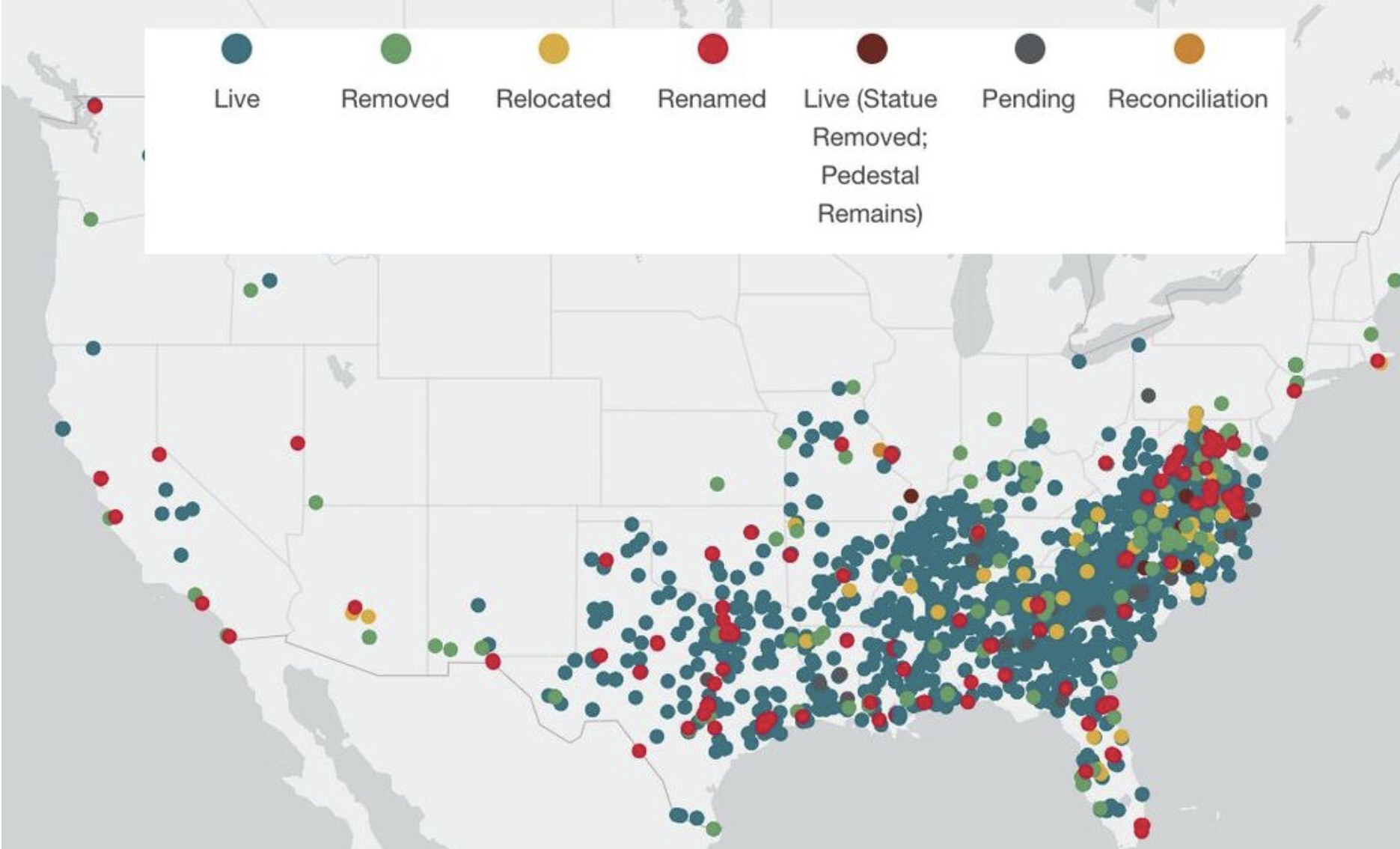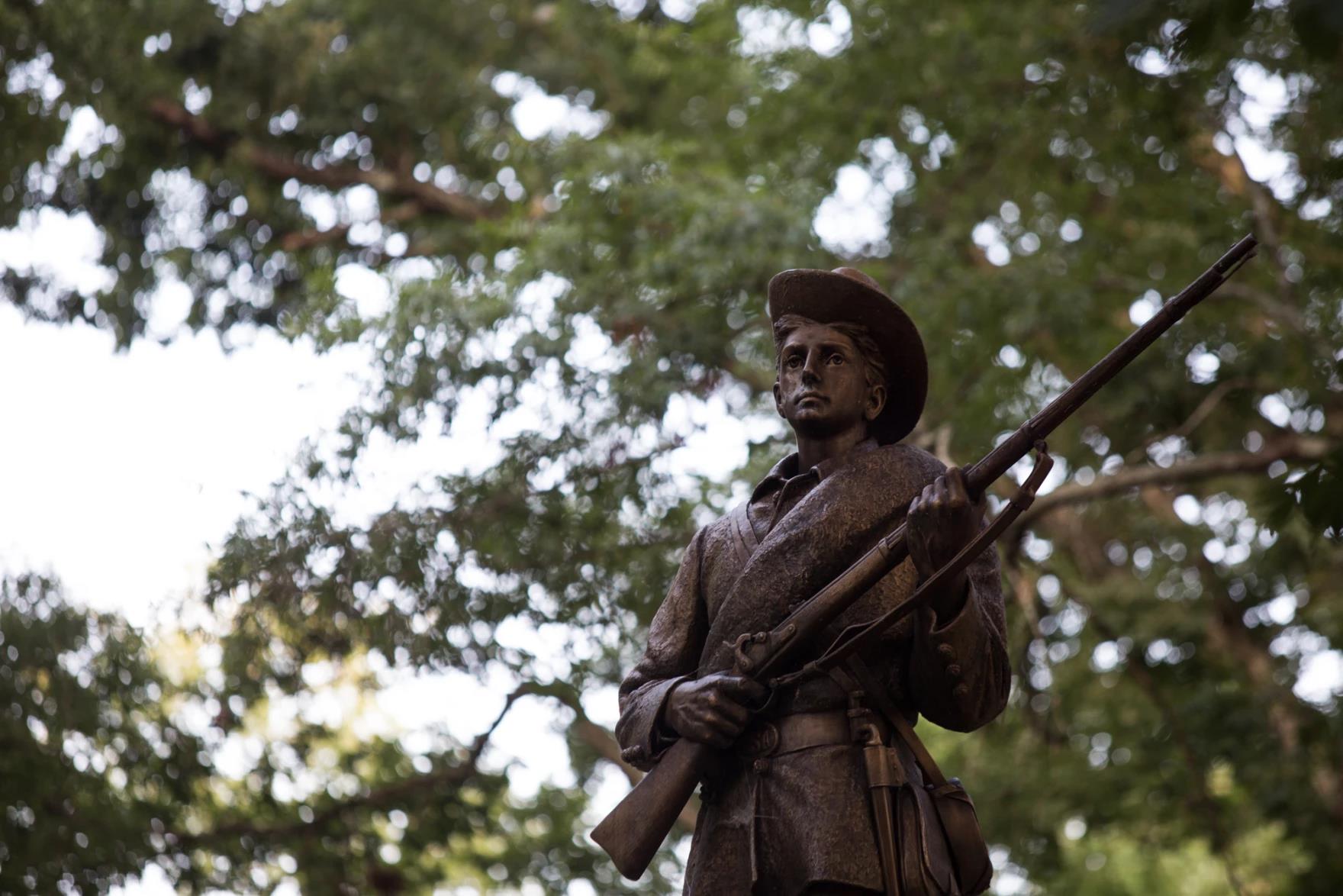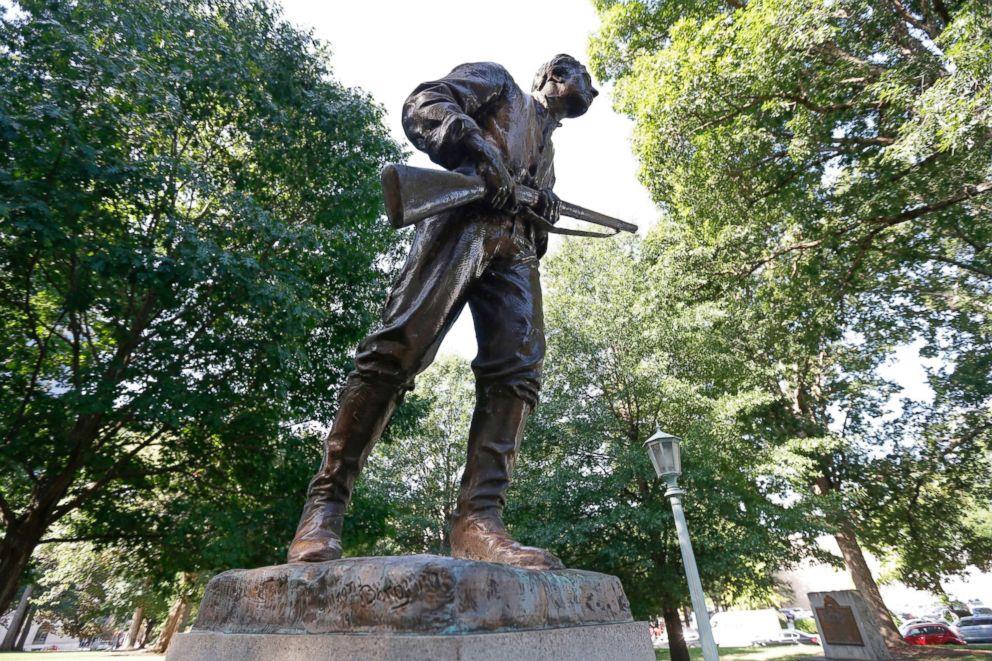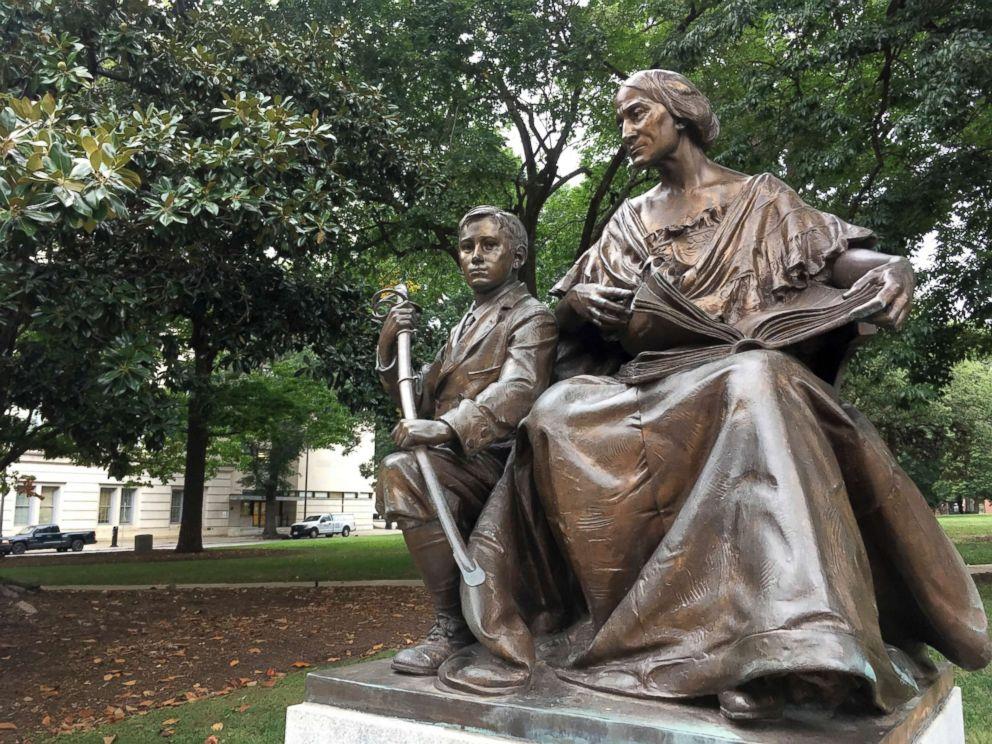
§ 100-2.1. Protection of monuments, memorials, and works of art.
(a) Approval Required. – Except as otherwise provided in subsection (b) of this section,
a monument, memorial, or work of art owned by the State may not be removed, relocated, or
altered in any way without the approval of the North Carolina Historical Commission.
(b) Limitations on Removal. – An object of remembrance located on public property may
not be permanently removed and may only be relocated, whether temporarily or permanently,
under the circumstances listed in this subsection and subject to the limitations in this subsection.
An object of remembrance that is temporarily relocated shall be returned to its original location
within 90 days of completion of the project that required its temporary removal. An object of
remembrance that is permanently relocated shall be relocated to a site of similar prominence,
honor, visibility, availability, and access that are within the boundaries of the jurisdiction from
which it was relocated. An object of remembrance may not be relocated to a museum, cemetery,
or mausoleum unless it was originally placed at such a location. As used in this section, the term
"object of remembrance" means a monument, memorial, plaque, statue, marker, or display of a
permanent character that commemorates an event, a person, or military service that is part of
North Carolina's history. The circumstances under which an object of remembrance may be
relocated are either of the following:
(1) When appropriate measures are required by the State or a political subdivision
of the State to preserve the object.
(2) When necessary for construction, renovation, or reconfiguration of buildings,
open spaces, parking, or transportation projects.
(c) Exceptions. – This section does not apply to the following:
(1) Highway markers set up by the Board of Transportation in cooperation with
the Department of Environmental Quality and the Department of Natural and
Cultural Resources as provided by Chapter 197 of the Public Laws of 1935.
(2) An object of remembrance owned by a private party that is located on public
property and that is the subject of a legal agreement between the private party
and the State or a political subdivision of the State governing the removal or
relocation of the object.
(3) An object of remembrance for which a building inspector or similar official
has determined poses a threat to public safety because of an unsafe or
dangerous condition. (2015-170, s. 3(c); 2015-241, s. 14.30(c).)
(a) Approval Required. – Except as otherwise provided in subsection (b) of this section,
a monument, memorial, or work of art owned by the State may not be removed, relocated, or
altered in any way without the approval of the North Carolina Historical Commission.
(b) Limitations on Removal. – An object of remembrance located on public property may
not be permanently removed and may only be relocated, whether temporarily or permanently,
under the circumstances listed in this subsection and subject to the limitations in this subsection.
An object of remembrance that is temporarily relocated shall be returned to its original location
within 90 days of completion of the project that required its temporary removal. An object of
remembrance that is permanently relocated shall be relocated to a site of similar prominence,
honor, visibility, availability, and access that are within the boundaries of the jurisdiction from
which it was relocated. An object of remembrance may not be relocated to a museum, cemetery,
or mausoleum unless it was originally placed at such a location. As used in this section, the term
"object of remembrance" means a monument, memorial, plaque, statue, marker, or display of a
permanent character that commemorates an event, a person, or military service that is part of
North Carolina's history. The circumstances under which an object of remembrance may be
relocated are either of the following:
(1) When appropriate measures are required by the State or a political subdivision
of the State to preserve the object.
(2) When necessary for construction, renovation, or reconfiguration of buildings,
open spaces, parking, or transportation projects.
(c) Exceptions. – This section does not apply to the following:
(1) Highway markers set up by the Board of Transportation in cooperation with
the Department of Environmental Quality and the Department of Natural and
Cultural Resources as provided by Chapter 197 of the Public Laws of 1935.
(2) An object of remembrance owned by a private party that is located on public
property and that is the subject of a legal agreement between the private party
and the State or a political subdivision of the State governing the removal or
relocation of the object.
(3) An object of remembrance for which a building inspector or similar official
has determined poses a threat to public safety because of an unsafe or
dangerous condition. (2015-170, s. 3(c); 2015-241, s. 14.30(c).)


THIS MAP WAS PRODUCED BY THE ANTI-AMERICAN SOUTHERN POVERTY LAW CENTER
SO IT'S PROBABLY FAIRLY ACCURATE


